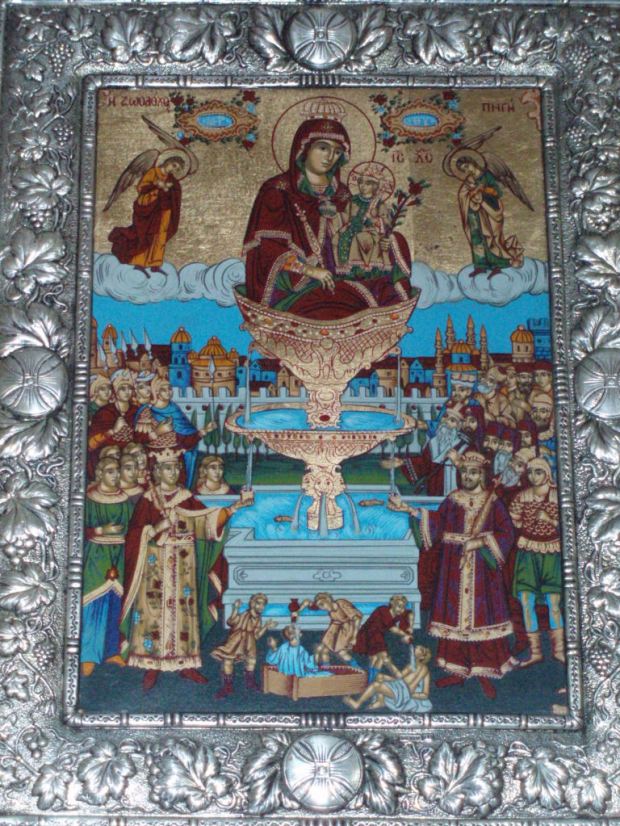Each year on the Friday after Easter, the Orthodox Church celebrates a unique feast: the feast of the Theotokos and the Life-Giving Spring. This feast commemorates three things in a single celebration: a miraculous healing, a specific location, and a saint – the Virgin Mary herself. Theotokos means God-bearer and is a name for the Virgin.
The story behind this feast stretches back to the early 5th century. Tradition claims that in Constantinople, a man named Leo met a blind man who was desperate for water. A voice spoke to him, telling him that there was water nearby. He searched but found nothing. The voice spoke again, mysteriously calling him “Emperor,” and directing him to a muddy spring in the midst of the grove of trees. The voice spoke a third time, telling him to anoint the blind man’s eyes with the water, so that he could see again. Only then did Leo recognize it was the Mother of God who had spoken to him and had guided him to this miraculous healing spring.
The news spread quickly. Years later, as the Theotokos had prophesied, Leo became emperor. He built a magnificent church on the site of the spring, dedicated to the Virgin Mary. This church, known as the Church of the Theotokos of Blachernae, immediately attracted countless pilgrims seeking healing.

The spring was soon named the “Life-Giving Spring” as a testament to the many miraculous cures received there. But the title carries another layer of meaning. It obviously points to the ultimate source of all healing: Jesus Christ. It is through the Virgin Mary that God grants us healing from both physical ailments and the wounds of sin.
The Theotokos herself is the “Life-Giving Spring,” because she gave birth to Christ. God’s love and healing grace flow through Mary.
But the story of the Life-Giving Spring takes a tragic turn with the fall of Constantinople in 1452. The Ottomans destroyed the church, leaving only a small, dilapidated chapel. This humble remnant stood for centuries until finally, in 1833, permission was granted to rebuild the church.
Today, a new church stands on the site, offering pilgrims a place of prayer and a source of spiritual and physical renewal, just as it did in Leo’s time.



